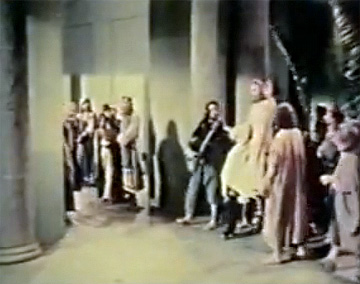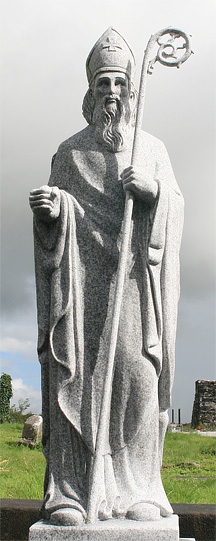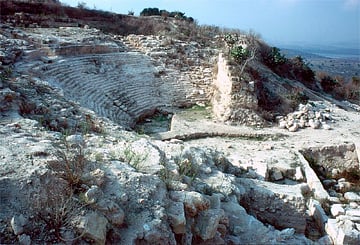Why “One” Jewish Perspective?
As a young Christian, I had a clear picture of what happened to Jesus in the last week of his life. This picture resulted from my knowledge of the Gospels, and, to a great extent, from images I had seen in Sunday School booklets and filmstrips. My mind had been impressed with scenes of Jesus’ triumphal entry into Jerusalem on Palm Sunday, of his “trial” before Pilate, and of his being assaulted by Jewish leaders. These images led me to believe that Jerusalem in the time of Jesus was a relatively small town inhabited by a relatively small number of Jews, and that the same Jews who had welcomed Jesus into town as a king on Sunday had turned against him on Friday. From my juvenile viewpoint, “the Jews” of Jerusalem had, as a single group, both hailed Jesus and then condemned him. Since only a few close disciples supported Jesus until the bitter end, it would have seemed appropriate to me to speak of “the” Jewish perspective on why Jesus had to die. (Photo: Jesus on Palm Sunday in a classic film version of his life. For the other side of the story, check out this video from Vintage 21 Church.)
 I no longer believe that my youthful picture of Jesus’ last week was historically accurate, though I do believe that the New Testament Gospels provide historically reliable viewpoints on what really happened that week. For one thing, the actual scale of life in Jerusalem was far greater than anything I had imagined. As I explained earlier in this series, it’s likely that the normal population of Jerusalem in the time of Jesus was around 35,000. But during the festival of Passover the population swelled to eight or ten times that number, perhaps even more.
I no longer believe that my youthful picture of Jesus’ last week was historically accurate, though I do believe that the New Testament Gospels provide historically reliable viewpoints on what really happened that week. For one thing, the actual scale of life in Jerusalem was far greater than anything I had imagined. As I explained earlier in this series, it’s likely that the normal population of Jerusalem in the time of Jesus was around 35,000. But during the festival of Passover the population swelled to eight or ten times that number, perhaps even more.
This means, among other things, that a tiny percentage of the overall population of Jerusalem actually welcomed Jesus into the city on Palm Sunday or called for his crucifixion early on Good Friday. Since scholars cannot agree on the precise location of Pilate’s headquarters, we cannot say definitively how many people might have gathered in his courtyard to call for Jesus’ death. This number is probably less than 500, possibly quite a bit less. What this means, therefore, is that something like .2% of the Jews in Jerusalem were demonstrably eager to have Jesus crucified.
But, one might object, perhaps this tiny percentage represented the majority. This objection is unlikely for three reasons:
First, we know from the Gospels that Jesus was, for the most part, very popular among the masses (for example, Matt 4:25; 8:1; 9:8; 12:15; 13:2; 14:14; 15:30; 20:29; 21:8).
Second, we also know that the Jewish leaders in Jerusalem who wanted to have Jesus killed hesitated precisely because Jesus was so popular among the masses there (Matt 21:46). Nothing in the Gospel records suggests that this popularity ended magically by Good Friday.
Third, in fact the Gospel records suggest that large numbers of Jews were deeply distressed by the death of Jesus. For example, as Jesus was walking along the Via Dolorosa, Luke tells us that “A great number of the people followed him, and among them were women who were beating their breasts and wailing for him” (Luke 23:27). Then, after Jesus was crucified, the crowds who “saw what had taken place, . . . returned home, beating their breasts” (Luke 24:48). In other words, vast numbers of Jews were horrified by the death of Jesus.
Thus it’s historically accurate to speak, not of “the” Jewish perspective on the necessity of Jesus’ death, but of several diverse Jewish perspectives. It’s quite likely that the majority of Jews in Jerusalem did not want Jesus killed at all. But the perspective that had greatest impact on the fate of Jesus was that of Caiaphas and other principal leaders of Jerusalem. This is the “one” perspective I’ll begin to examine in my next post.

